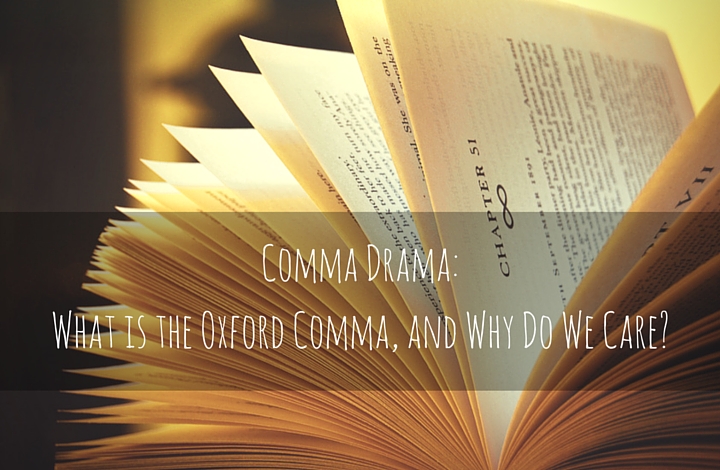Who ever thought a comma would be at the heart of an international debate? Certainly not me, but the Oxford comma is proving to be quite a little trouble-maker.
What is the Oxford comma?
The Oxford comma (sometimes called the serial comma, or Harvard comma) is a comma placed immediately before the coordinating conjunction (usually and, or, or nor) in a series of three or more terms. For most of us, it’s the comma we’ve always been told we could leave out when listing things.
For example, I was taught to write, “Santa Cruz, San Francisco and Oakland.” But Oxford comma users would write that phrase like this: “Santa Cruz, San Francisco, and Oakland.”
See how that little comma snuck in there before “and Oakland”? That’s the Oxford comma.
So what’s all the ruckus about the Oxford comma? Well, grammarians can’t agree on whether it should be used or not.
Some big publications and guides, including the Oxford Style Manual (hence the name), the Chicago Manual of Style, The MLA Style Manual, Strunk and White’s Elements of Style, and the U.S. Government Printing Office Style Manual, mandate use of the Oxford comma, while the Associated Press Stylebook, the New York Times stylebook, and the Economist style guide advise against it.
Why the confusion and disagreement? If clarity is the priority, a case can be made that in some instances the Oxford comma clarifies the meaning of a sentence, and in others, it confuses the meaning. As with any good debate, a case can be made both for and against it.
A case for the Oxford comma:
“She took a photograph of her parents, the president, and the vice president.”
This is a classic example from the Chicago Manual of Style. Without the Oxford comma, this reads that the subject’s parents are the president and the vice president.
A case against the Oxford comma:
“I dedicate this book to my father, Burt Reynolds, and America.”
With the Oxford comma, this example reads that the author’s father is Burt Reynolds. Removing the Oxford comma clarifies that there are three entities being referred to: “I dedicate this book to my father, Burt Reynolds and America.”
The following popular (and entertaining) example in support of the Oxford comma has been making the rounds on social media recently:
I will fight to support the Oxford comma until I draw my last breath. pic.twitter.com/Y0T6c3F4iI
— Alexander MacDonald (@alex_macdonald) April 30, 2015
If you’d like to follow along in the Oxford comma debate, search the Twitter hashtag #OxfordComma. You can also see what side of the debate celebrities fall by following @CelebrityOxford on Twitter. While you’re at it, follow @IAmOxfordComma, whose profile reads, “I am the oxford comma. I resolve ambiguity. Sometimes I also create ambiguity.”
Still not sure which side of the debate you stand on? The following image makes another case for why it should be used.
Since there is no agreement about the Oxford comma among the biggest publications and style guides, the general rule is to find out what the publication you’re writing for calls for. If there’s no rule in place, choose to either use it or not, and stick with your decision. You don’t want an article or blog post to have some sentences with the Oxford comma and others without it.
So, that’s the comma drama surrounding the Oxford comma. It’s a grammar nerd tug-o-war over a tiny little mark, with no end in sight.
Which way do you sway with the Oxford comma?
Top photo: quatrostaggioni (CC-BY)
Follow @CatJohnson on Twitter







